|
|
Post by whazzatt on Nov 30, 2021 3:20:43 GMT -8
We call boilers 'geysers' in South Africa. A wood-fired geyser is known as a 'donkey'. Enter the rocket donkey! A highly adaptable solution to using wood fire to heat a fairly large quantity of water. In this case, approx. 130 litres in under 2 hours using a 6-inch J-tube. His reason for not wanting a fire under a cast-iron bath is, according to him, that the bottom of the bath can get very hot, causing bathers to have to sit on submerged wooden planks. He did not want that. His reason for not wanting a copper coil thermosyphon mechanism is, according to him, because spurts of hot water make the bathing experience tricky. Here are pics of the solution. The final picture should give you an indication of what is happening on the inside of the outer barrel. My friend is very happy with the end product. He asked his partner to marry him a few days ago, and she said yes. This is obviously due to the presence of the rocket donkey! 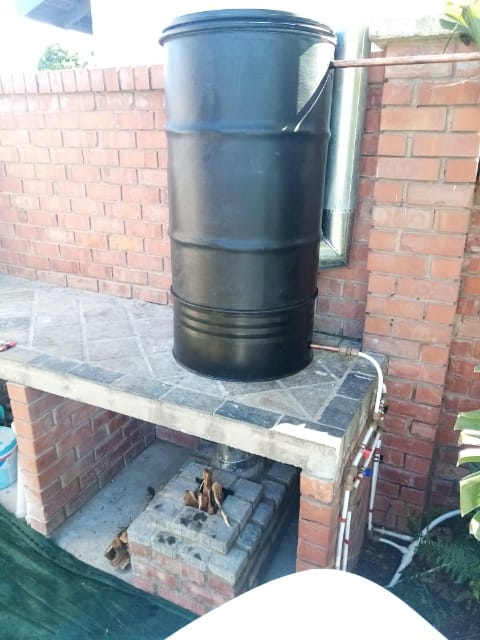 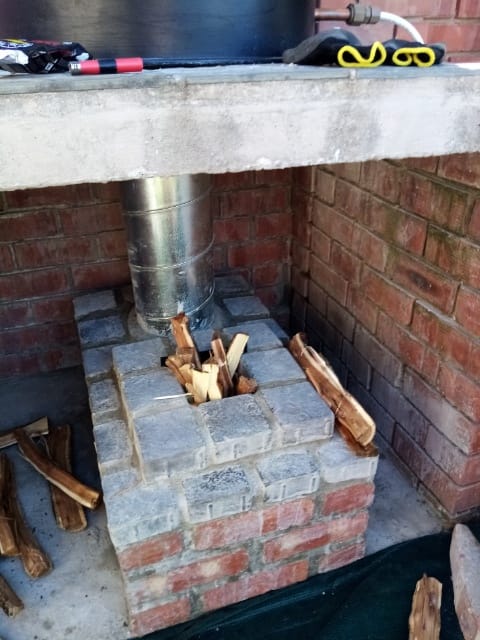 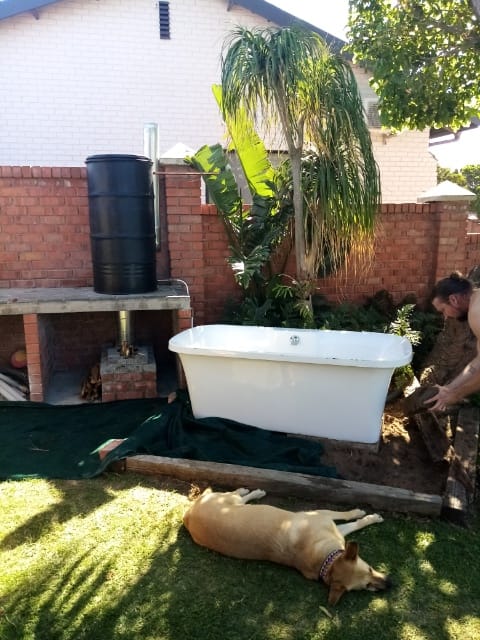 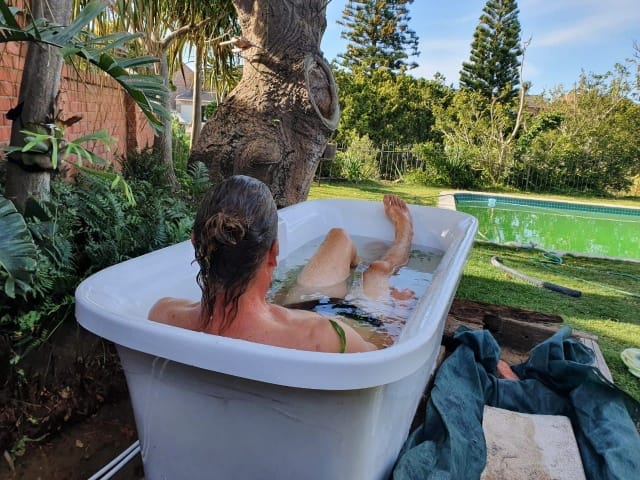 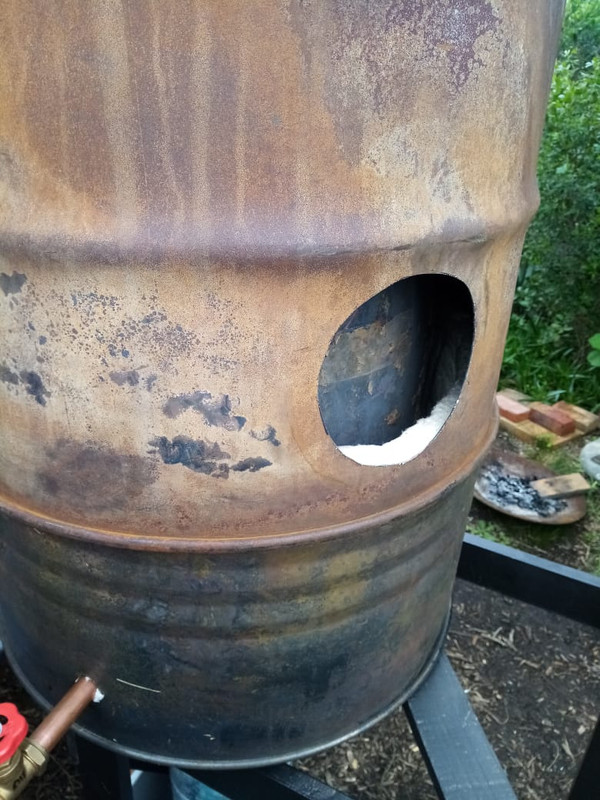 |
|
Forsythe
Full Member
   Instauratur Ruinae
Instauratur Ruinae
Posts: 208
|
Post by Forsythe on Mar 1, 2022 0:26:05 GMT -8
How freaking sweet is this!? ...Kinda-sorta looks like a J-tube — meets Aprovecho Institutional stove — meets hot-tub preheat tank. I dig it! Yeah, I firmly believe that heating the whole batch of water uniformly in a tank/pot/tub is the way to go. Although...Matt Walker (walkerstoves.com) came up with a clever little double-boiler of sorts which marries the two design-types into one, with a whole lot more margin of safety than the heat-exchange-coil-in-flame-path method: A large tank for the primary boiler in direct contact with flame, (essentially holding "thermal mass" water as the heat-exchange medium) — and a coil running through that tank of "ballast" / thermal mass water. ...So, like a bain marie, but with an inner coil instead of an inner 2nd pot. The idea being that the water passing through the coil won't risk superheating and flashing to steam. (As the water line gets closer and closer to the temp of the outer boiler's contents [max. of 212ºF / 100ºC], it absorbs less and less heat across that diminishing thermal gradient... which makes actually boiling the water in the inner coil much harder to do.) IIRC the highest output in the demo vid was around 125ºF-130ºF (52ºC-54ºC-ish) but could be adjusted downward with a higher flow-rate through that double-boiler coil. ...only safety caveats being that the outer tank can't be allowed to boil dry (obviously) and both it and the inner coil need to be open to air to allow for thermal expansion like any heat-exchange copper coil water heater would — just without the risk of sudden flash-boiling in the line. Regardless, that "rocket-donkey" is a way-cool setup, and I appreciate you sharing this, whazzatt ! ...can I ask if that's PEX line running off the copper pipe at the bottom, or is that some other type of (¿PVC?) Cheers |
|
|
|
Post by whazzatt on Sept 21, 2022 0:51:47 GMT -8
...can I ask if that's PEX line running off the copper pipe at the bottom, or is that some other type of (¿PVC?) Sorry about this delayed reply. Yes - PEX pipe. |
|